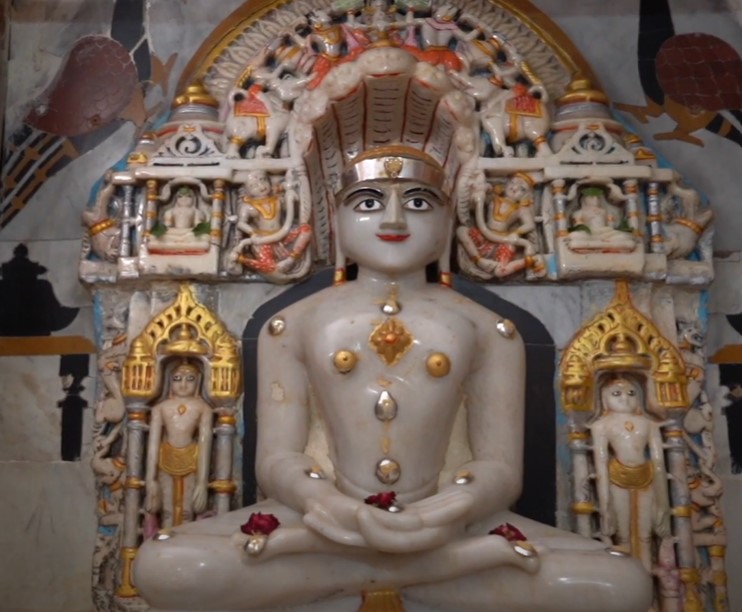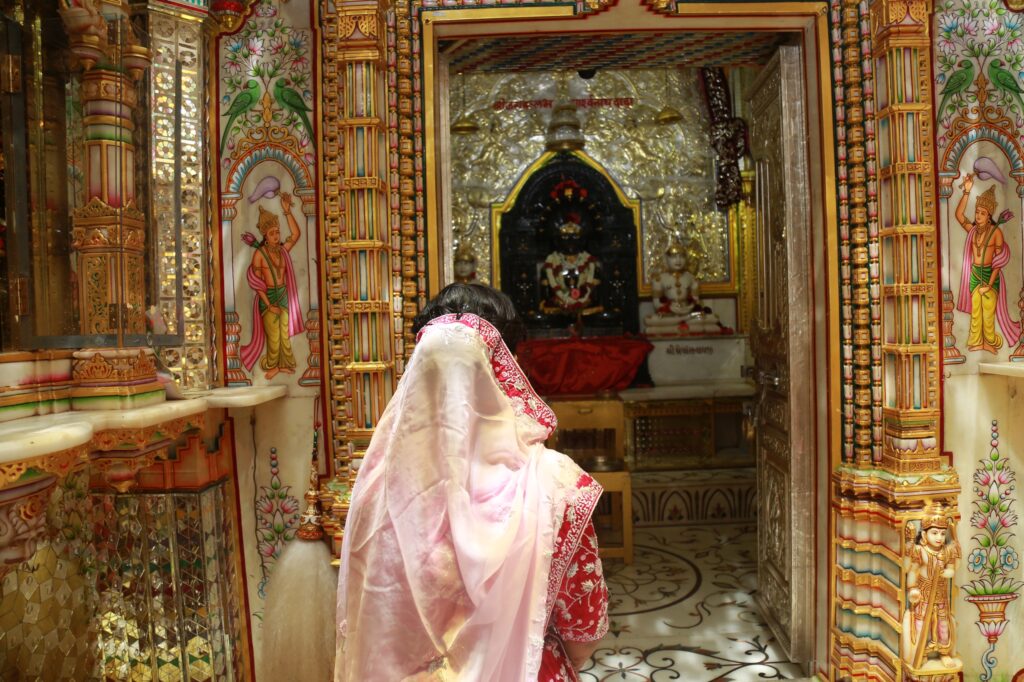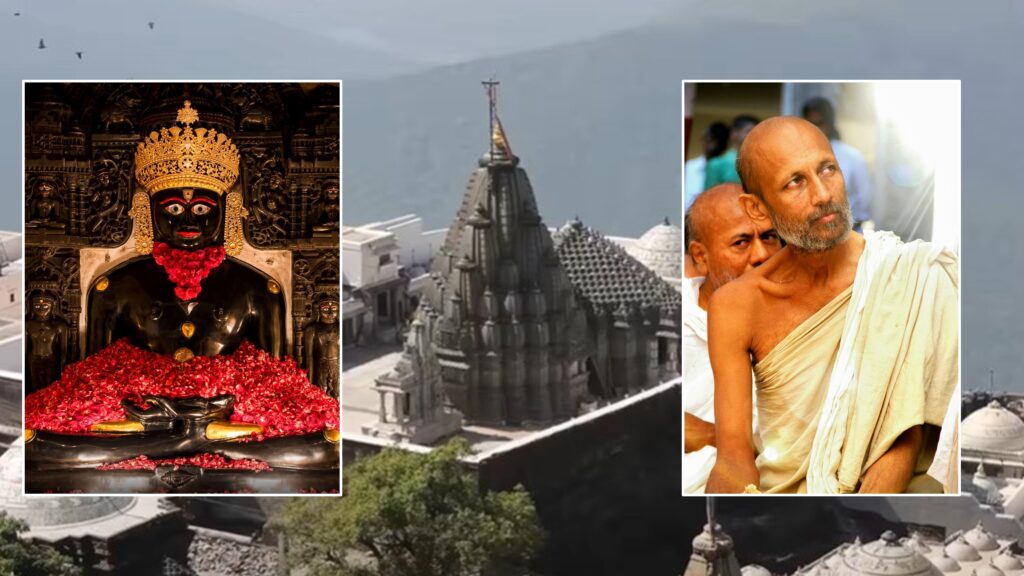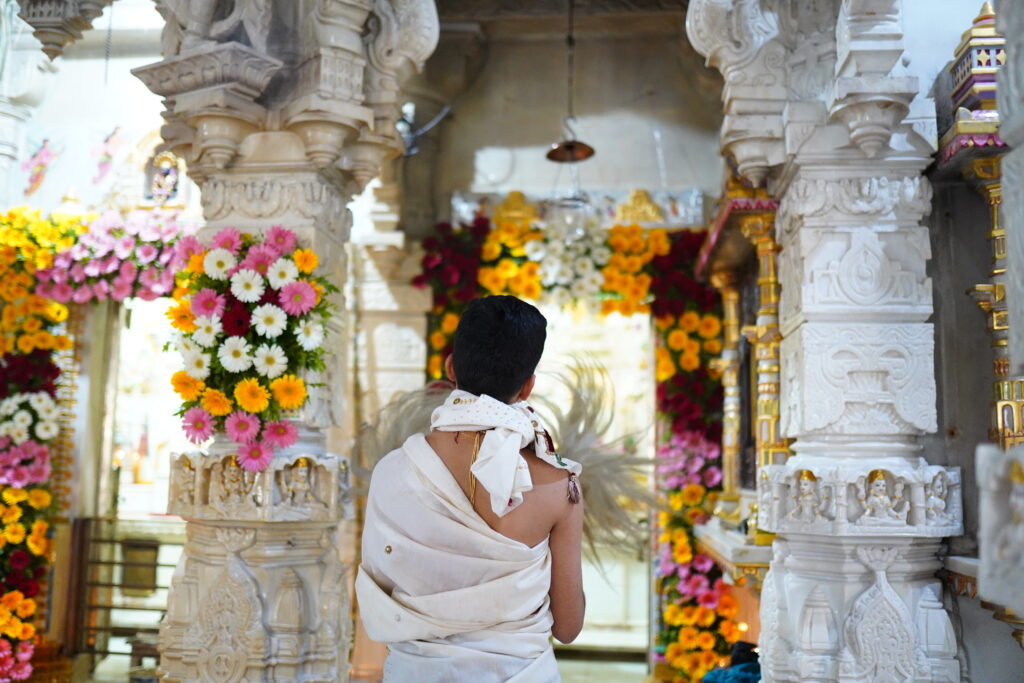Why do Murtis and Temples increase Samyag Darshan? To answer this question properly, we must understand Samyag Darshan properly. Read till the end of this Article to know the answer.
What is Samyag Darshan?
Samyag Darshan, at its core is the intuitive understanding of “Who Am I?”
‘I am the all – seeing, all – knowing, unfiltered, unobstructed, perfect, complete, blissful Soul.’ The moment when this statement moves from the mind to the heart and becomes a constant experience, it is the moment we have achieved Samyag Darshan.
Now, the next question which arises here is, Where does such Samyag Darshan come from? So to answer this, the Tattvartha Sutra Says “Tannisargadadhigamaadva” which means Samyag Darshan comes from two ways
1. Nisarg which means natural without any external influence and
2. Adhigam which means effort with external influence.
The first one which is the natural type is rare and is usually the culmination of multiple lifetimes of purification. The second method Adhigam has two main sources i.e. Jinvani means the teachings of Tirthankar Parmatmas and Jin Darshan means the worship of Tirthankar Parmatmas.
It is obvious to see how Jinvani can result in Samyag Darshan but Jin Darshan might be a little harder to obtain Samyag Darshan. It might be easier to understand how Murtis can help develop Samyag Darshan, if we consider movies.
Murti’s Role in Jainism
Why are movies so widely attractive? When people can just read the books or scripts, what extra do movies provide?
To answer this, we could quite easily say that movies bring to life the words on the page. They convey the point through sight and sound, which tend to stay preserved in our memory for much longer. Now, considering this we can say that this is the point of Murtis as well.
Murtis bring to life the virtues and state of being, we read in scriptures. When interacting with each other, Humans subconsciously analyze body language and gain extra context. Likewise our Murtis are also prescribed and designed in such a way that seeing them elicit certain emotions.
The slight smile on Parmatmas face speaks of a peaceful bliss. We can say that, it will be hard to not feel a certain amount of joy by just looking at that smile. Parmatma’s strong arms but hands placed on the lap exhibit controlled strength, the definition of Ahimsa.
The eyes (open or closed), the slightly bent fingers, the Padmasana Posture etc., all show certain qualities of the Tirthankara Parmatma, which are also ours. Thus, Murti serves as a ‘Mirror To The True Self.’

The moment we begin to identify ourselves with the Murti, we start walking on the path to Samyag Darshan. Just as the movies include sight and sound, various temple activities such as Puja, Singing Stutis, Stavans, Chaityavandan etc., also enhance the experience of self identification with sound, touch and physical movement.
Different Ways of Attaining Samyag Darshan
Yet there will still be those few people, who will prefer the books or scripts than the movie (even assuming the movie sticks to the books or scripts). Similarly there will be those people, who will gain more knowledge from the Jinvani than Jin Darshan. These will be few and far between.
There will be even fewer people for whom neither support is necessary. Movies are entertainment for the mass number of people, books are for the more imaginative ones and pure imagination is entertainment enough for few people.

Similarly, Murtis are the path to Samyag Darshan for a mass number of people, Scriptures will be enough for the spiritually attained and just time will be enough for those who have reached the higher levels of Spirituality.
Please Note : This statement is not meant to minimize the importance of Scriptures and Gyan. Both Jinvani and Jin Darshan complement each other. It is just that there are a few who can progress solely with Jinvani.
But as a rule – those who are still influenced by external sensory stimulation need sensory triggers to go within, AKA Murtis. Let us understand this more clearly with a recent example of someone we know.
Miracle of Shri Neminath Prabhu’s Murti
A young woman had recently lost her mother. She was from a Hindu moderately religious family, However due to the trauma of loss, she lost all faith both in God and her own Soul. A few years passed by and she was still in a depressive state.
Once, her father’s Jain friend convinced her to come with his Sangh for the yatra of Shri Girnarji Tirth. She went purely out of pressure and with no intention of climbing the mountain. But, when she got there, she was convinced to climb the mountain by Param Pujya Acharya Shri Hemvallabh Suriji Maharaja.

After The Yatra that girl explained the moment she stepped into the temple and saw Shri Neminath Prabhu’s Murti, She immediately got the sense that there is some power greater than herself. Her deep trauma of years melted away.
Soon afterwards, she started learning Jain philosophy and she even started practicing various Jain rituals. Recently her father passed away, leaving her all alone. But this time, there was pain of loss in the heart of the girl but there was no Depression, no Fear, no Anxiety.
Instead there was a sense of clarity of Karma and Sansar in her heart. The epiphany on Girnar was a spark of Samyag Darshan, while this state of Samata (equanimity) was the result of that Samyag Darshan strengthening over time.
There are many such stories of profound inspiration just through interaction with Prabhu’s Murtis.
Hundreds of souls have also taken Diksha though their previous life had zero religious inclination, all through the darshan of Shri Girnari Neminath Prabhu, Shri Shatrunjay Adinath Parmatma, Shri Shankeshwara Parshwanath Prabhu etc.
Idol (Murti) Possession
One more important question that keeps arising in the mind of many people is Why would Tirthankar Parmatma or Purvadhar talk about Murti Possession?
Tirthankara Parmatma with their infinite knowledge and Purvadhars with their vast knowledge, always see things from many angles and viewpoints. Even the foundational pillars of Jainism which are Ahimsa, Anekantwad, Aparigraha etc., can have different applications in different contexts.
For example, throwing rocks on birds for fun is definitely violence but doing so in order to keep them out of reach from a hunter would be considered as non – violence.
The same theory applies for possessions like a Murti. As we learnt above, Murtis are a strong trigger for Samyag Darshan and other spiritual purification for a mass number of people. The majority of people are considered as ‘Baal Jeev’ or souls in the very early stages of spiritual understanding and practice.
Such people are constantly surrounded by possessions, which only serve to trap them in sensory pleasures and give rise to the passions which are anger, greed, ego, deceit known as Kashays. For such people, the possession of Murtis are not considered as possessions at all, it is rather considered as a tool or medium to release a person from more harmful possessions.
For example, A thorn which is used to remove another thorn stuck in a person’s foot is less than a thorn and more of a surgical equipment. Such possessions are called Prashast in Jainism. They are useful for those at a lower spiritual level and should also be removed for those at higher levels.
The same logic should be used for other religious objects and rituals. This context – based prescription of spiritual activity by Tirthankar Parmatmas and Purvadhars is how their Anekantavada shines.
To conclude all this, Murtis and temples serve as active reminders of ‘Who We truly are? What virtues do we have within us?’ Thus, by worshiping the embodiments of Universal love, we too gain the virtue of Universal love.



